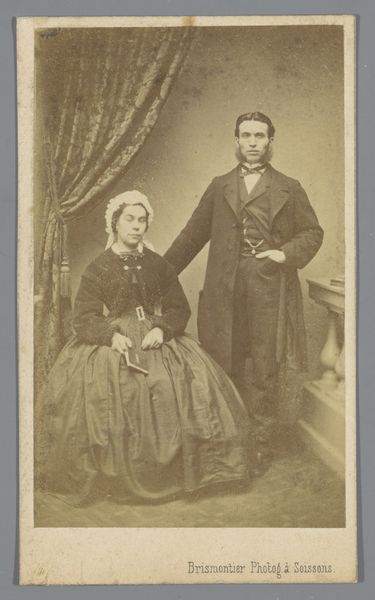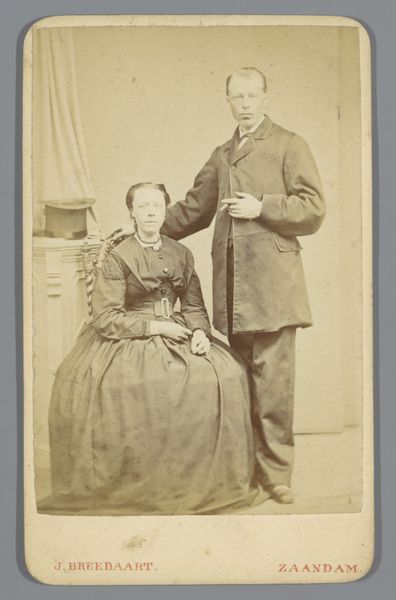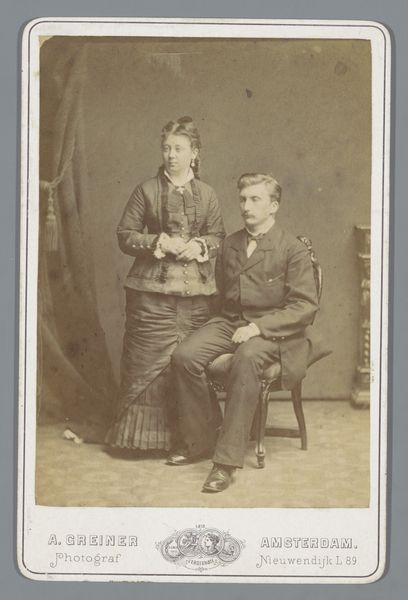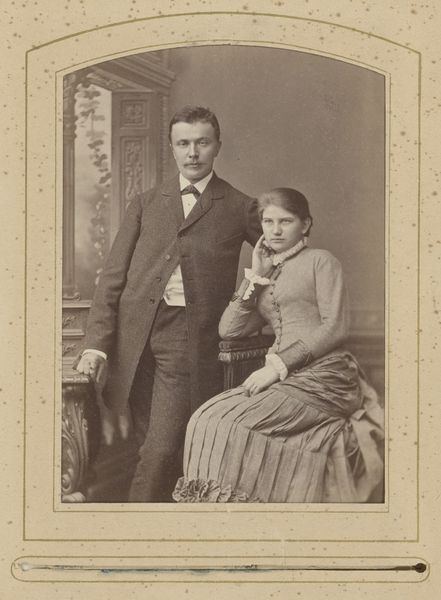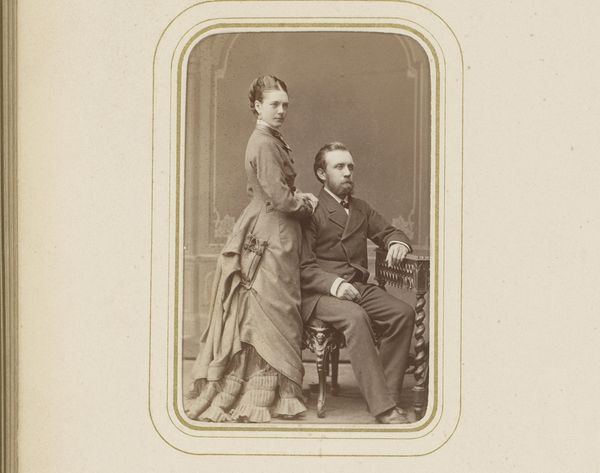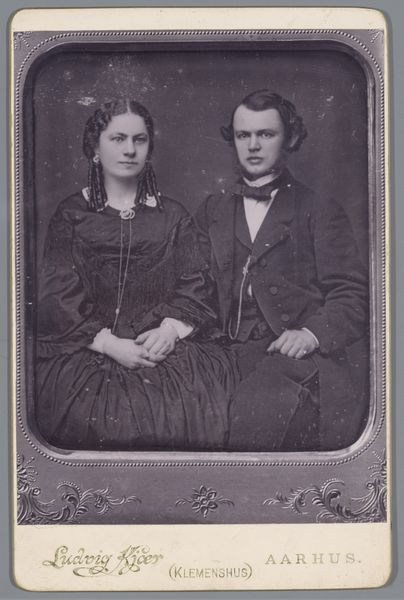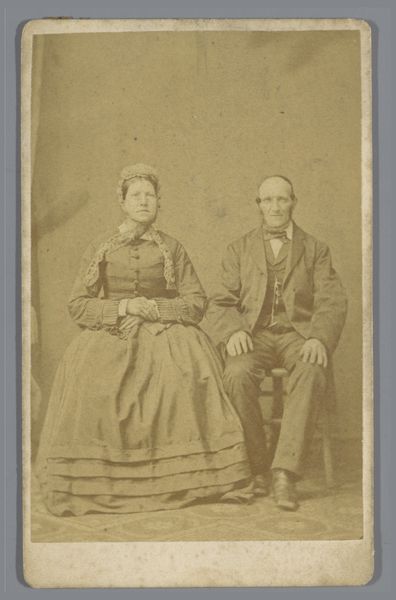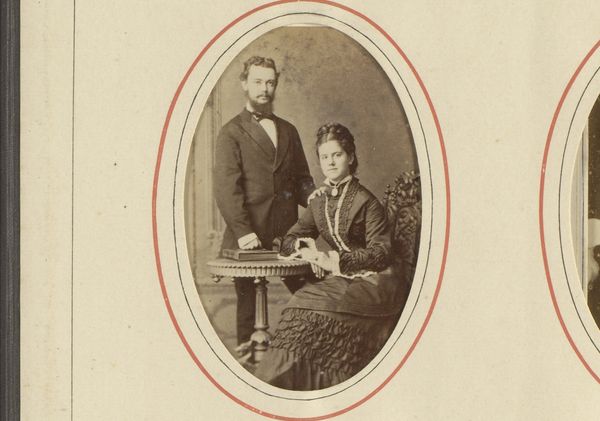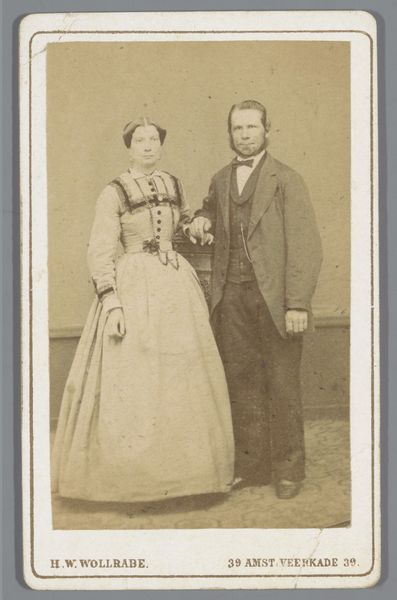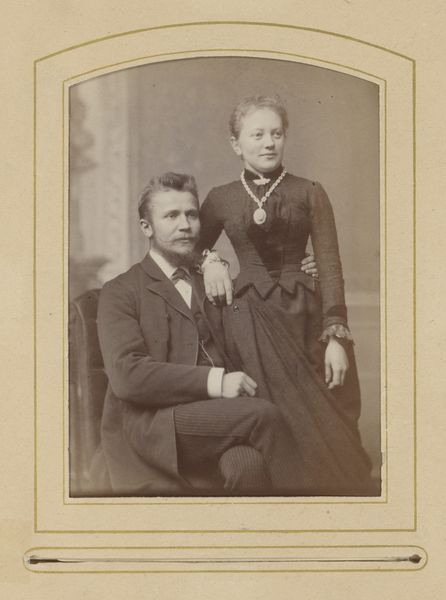
photography, gelatin-silver-print
#
portrait
#
photography
#
gelatin-silver-print
#
genre-painting
Dimensions: height 105 mm, width 63 mm
Copyright: Rijks Museum: Open Domain
Curator: Let’s turn our attention to this fascinating gelatin-silver print, simply titled "Portret van een onbekende man en vrouw," by Carl Wilhelm Bauer. The Rijksmuseum dates it between 1873 and 1908. Editor: It’s captivating. There's such formality here – yet a quiet tenderness. The sepia tones imbue the image with a sense of faded memory, like a cherished antique discovered in an attic. The composition itself feels meticulously arranged. Curator: Absolutely. These early photographic portraits offer us a glimpse into the social and cultural landscape of the late 19th century. What does it say about gender roles and societal expectations, I wonder? Note the woman's seated position, her demure posture. It’s a visual representation of Victorian ideals of femininity. Editor: Precisely! And the pillar that the man leans on! Such pillars frequently appear in such photos. One could argue that this prop – so rooted in classical architecture – speaks to enduring ideals of family legacy and social stability that these individuals hoped to project, their aspirations etched in a material object in their own visual culture. But it also evokes the performative aspects of posing for early portrait photography. Curator: The deliberate choice of clothing also reveals something about their class. Look closely at the intricate detailing of her dress, a marked divergence from how laboring class women presented themselves in photographic portraits during the same period. It hints at a life of relative privilege. Editor: Symbolically, even the accessories contribute to the narrative. Her ornate pin seems significant. It might even be an heirloom, laden with family history and memory. A question: Is the somewhat serious expressions we read on both subjects also related to an expectation or decorum expected from formal studio photography, as if to mark the occasion as monumental or not easily reached by all strata of the social classes. Curator: Precisely, it might reveal a deeper aspect of the era's culture – ideas regarding identity and social class, even the limitations of artistic expression, given its being relatively unexplored still. The picture begs us to contemplate. Editor: I agree. I’m still struck by the emotional depth this apparently simple image evokes; in particular I'm struck by how much information early viewers might read on the face of the photograph and those portrayed in it! Curator: Considering Bauer’s body of work in photography, there's definitely room for deeper discourse. Editor: An invitation to consider not just a portrait of two individuals but a portal into a time, a class, and a culture altogether.
Comments
No comments
Be the first to comment and join the conversation on the ultimate creative platform.




